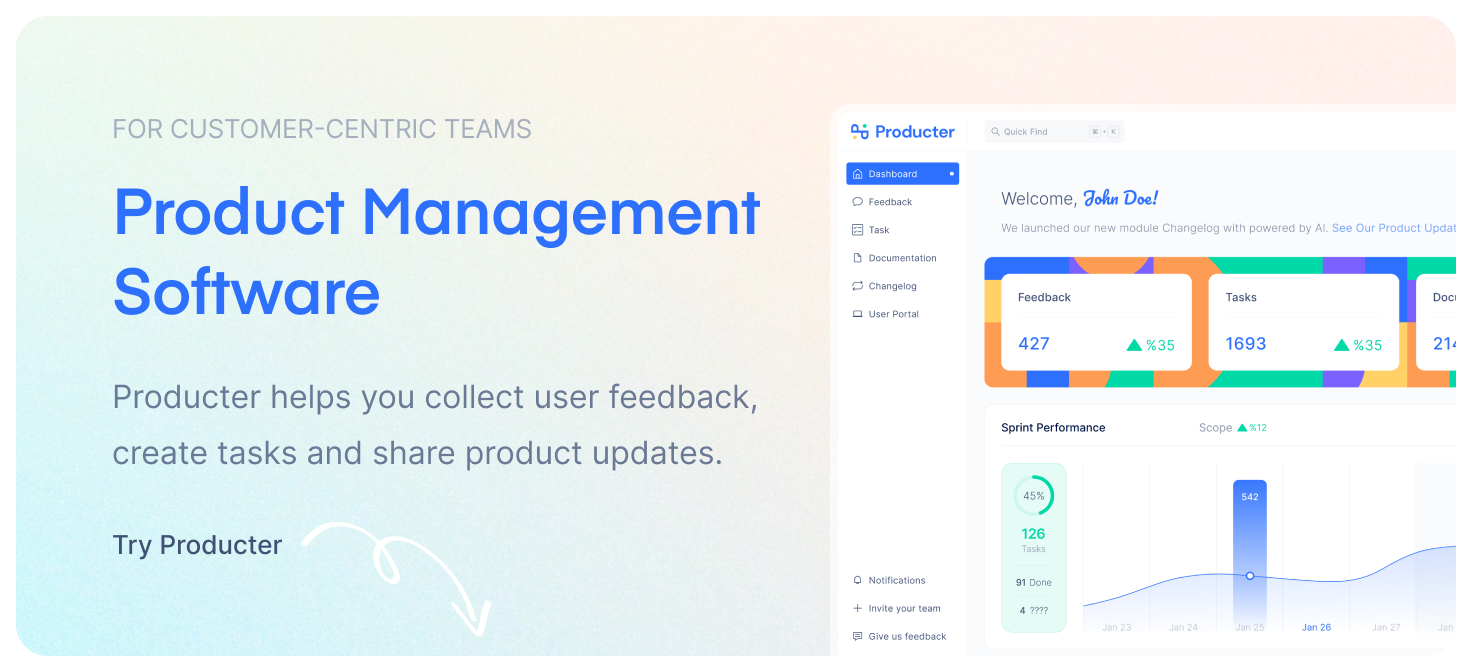We all know that we need to get feedback from our customers, but we often forget that we need to get feedback from our internal stakeholders, too.
Feedback is a crucial component of any product development process. It can help you highlight specific areas for improvement, identify gaps in the visual brand's identity or output, and provide insight into how internal stakeholders in your company perceive the product strategy.
Internal feedback is a great way to improve your product or service and ensure that your stakeholders are content and happy. A valuable internal feedback app can help your product collect all the data you need within minutes.

How does Internal Feedback work?
Individuals, teams, or processes can benefit from feedback loops that improve performance. Through feedback loops, agile teams can identify potential improvement areas regularly. Our product and techniques will be improved when these potential improvements become actionable product items.
Teams with feedback loops achieve better coordination, collaboration, and commitment to deliverables. Additionally, they can promote more proactive communication and ownership, improved performance, and agility.

Generally, feedback loops should have three primary stages. We capture and store the input during the first stage – this is the data with which we operate every day. Stage two consists of analyzing the feedback collected from stage one. We make decisions based on the second stage's lessons learned in the last stage. It is an ordinary process that the fourth stage of the feedback loop is when we start implementing the changes. As a result, the process continues - with a feedback loop after another feedback loop, and so on. Thus, continuous improvement is an environment in which any organization can successfully take advantage.
To sum up, feedback loops can be a goldmine of information for a company and lead to improved products, more satisfied users, and higher revenues.
How to Build a Feedback Loop
We've described what feedback loops are, what they're used for, and how they can benefit you and your stakeholders. Now it's time for us to explain how to create one for ourselves.
Here is a basic feedback loop:
- Collect feedback
- Analyze feedback
- Act on feedback
- Inform your customers
It can be difficult to select the right tools for your business - especially when it comes to feedback tools. Various methods are used to collect feedback, and reports are generated that highlight multiple insights. We have created three features that work differently to handle feedback loops.
Feedback Features by Producter

How to Manage Internal Feedback
Using Producter, you can collect all your feedback in one place, and you can then evaluate those ideas based on your product strategy.
Here is how to do that:
Review each feedback
Once it is submitted, organizing your ideas into categories or adding tags to identify their content makes it more manageable. Adding any additional information that will determine your next move might also be helpful. You might decide immediately not to pursue an idea if it does not align with your product strategy or what your customers need. However, you should always be open to learning from feedback.
Notice patterns
By grouping ideas by theme, you can identify common requests and avoid duplication of effort. It is very easy to spot patterns with idea management software since users can select the topic they want to relate their idea to. Generally, many software includes a voting function so that people can view a list of submitted ideas and show their support for each one
Learn more here → Producter User Portal Module
Prioritize needs as a team
Take the time to consider whether each request aligns with your business and product goals. You can prioritize based on effort and impact score and use that numbers to rank ideas quantitatively and objectively. You can quickly decide whether to accept or reject each submission.
Share your roadmap
It's a given you will need to respond to some requests right away. However, other ideas will align with both your short-term and long-term plans. Describe how these ideas support your larger product strategy in your product roadmap, a visual representation of your future plans. Your team should also know what you are pursuing on your roadmap.
Communicate your result
Inform the person who submitted the idea of your decision after you have decided whether or not to pursue the idea. Explaining why you are sharing will encourage a culture of transparency. When people know their suggestions are being considered seriously, even if your answer is no, they are more likely to submit more ideas and requests in the future. [Link: Try Producter now to automate this process.]
As a product company, you will want to make sure that you collect feedback from your stakeholders to improve your business and the way you do things. Feedback is a crucial part of any business, and if your business doesn't have a good structure in place for it, then you are surely missing out on a lot. That's why we're here to discuss how to collect internal feedback and how to use that to improve your business.
We hope you enjoyed this part of our ebook about how to collect internal feedback. One of the most important things you can do is ask for feedback. If you are in a product manager/owner position, your coworkers will likely be more than happy to give you some pointers on how to improve your product. If you don't already have a system for collecting feedback, you can find more information on how to manage internal feedback by visiting Producter Feedback Module.
Producter is a product management tool designed to become customer-driven.
It helps you collect feedback, manage tasks, sharing product updates, creating product docs, and tracking roadmap.






